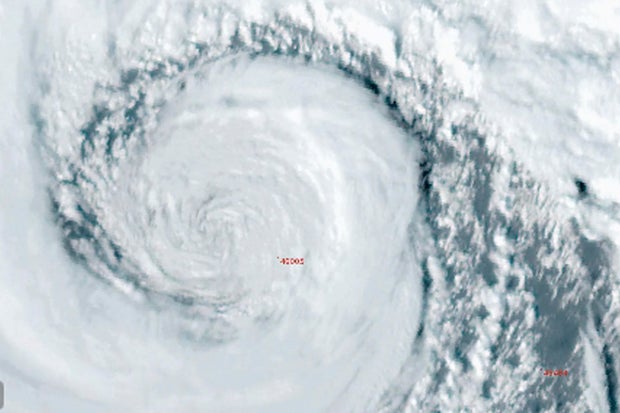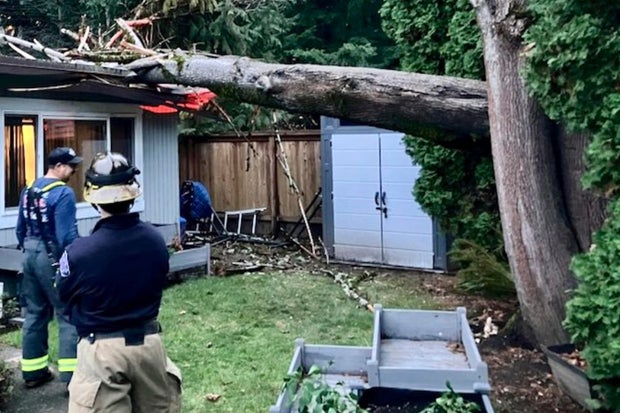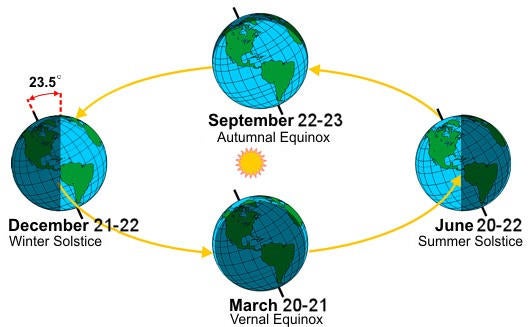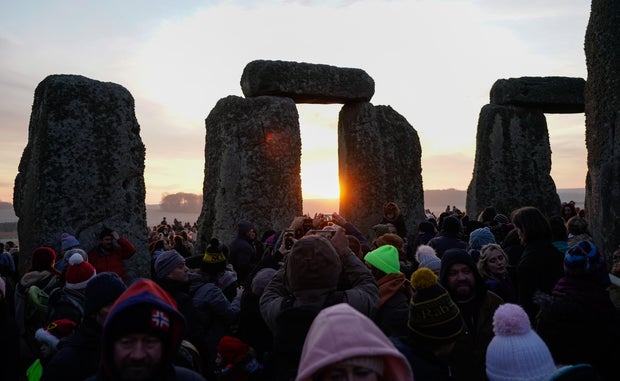CBS News
Bomb cyclone in Northwest leaves hundreds of thousands without power, kills at least 1

A major storm swept across the northwestern U.S., battering the region with strong winds and rain, causing widespread power outages and downing trees that killed at least one person.
The Weather Prediction Center issued excessive rainfall risks through Friday and hurricane-force wind warnings were in effect as the strongest atmospheric river – a large plume of moisture – that California and the Pacific Northwest have seen this season overwhelmed the region. The storm system that started hitting Tuesday is considered a bomb cyclone, which occurs when a cyclone intensifies rapidly.
National Weather Service Portland via AP
Falling trees struck homes and littered roads across northwest Washington. In Lynnwood, Washington, a woman died Tuesday night when a large tree fell on a homeless encampment, South County Fire said in a statement on X. In Seattle, a tree fell onto a vehicle, temporarily trapping someone inside, the Seattle Fire Department reported. The agency later said the person was in stable condition.
“Trees are coming down all over the city & falling onto homes,” the fire department in Bellevue, about 10 miles east of Seattle, posted on the social platform X. “If you can, go to the lowest floor and stay away from windows. Do not go outside if you can avoid it.”
Eastside Fire & Rescue via AP
Early Wednesday, over 600,000 houses in Washington state were reported to be without power on PowerOutage.us. The number of outage reports had fluctuated wildly Tuesday evening, likely due in part to several weather and utility agencies struggling to report information on the storm because of internet outages and other technical problems. It wasn’t clear if that figure was accurate. More than 4,000 had lost power in Oregon and nearly 15,000 in California.
As of 8 p.m., the peak wind speed was in Canadian waters, where gusts of 101 mph were reported off the coast of Vancouver Island, according to the National Weather Service in Seattle. Along the Oregon coast, there were wind gusts as high at 79 mph Tuesday evening, according to the National Weather Service in Medford, Oregon, while a wind speed of 77 mph was recorded at Mount Rainier in Washington.
The National Weather Service warned people on the West Coast about the danger of trees during high winds, posting on X, “Stay safe by avoiding exterior rooms and windows and by using caution when driving.”
In Northern California, flood and high wind watches were in effect, with up to 8 inches of rain predicted for parts of the San Francisco Bay Area, North Coast and Sacramento Valley. Twelve-16 inches were forecast for far Northern California and far southwestern Oregon into Friday, according to the National Weather Service Weather Prediction Center. Dangerous flash flooding, rock slides and debris flows were expected.
A winter storm watch was issued for the northern Sierra Nevada above 3,500 feet, where 15 inches of snow was possible over two days. Wind gusts could top 75 mph in mountain areas, forecasters said.
The National Weather Service issued a flood watch for parts of southwestern Oregon through Friday evening, while rough winds and seas halted a ferry route in northwestern Washington between Port Townsend and Coupeville.
A blizzard warning was issued for the majority of the Cascades in Washington, including Mount Rainier National Park with up to a foot of snow and wind gusts up to 60 mph, according to the weather service in Seattle. Travel across passes could be difficult if not impossible.
The Weather Prediction Center said heavy, wet snow would fall along the Cascades and far Northern California. accumulating at rates of two-three inches per hour. That along with gust sup to 65 mph could result in whiteout/blizzard conditions and “near impossible travel at pass level,” the center said.
CBS News
Social Security Fairness Act passes U.S. Senate

Legislation to expand Social Security benefits to millions of Americans passed the U.S. Senate early Saturday and is now headed to the desk of President Joe Biden, who is expected to sign the measure into law.
Senators voted 76-20 for the Social Security Fairness Act, which would eliminate two federal policies that prevent nearly 3 million people, including police officers, firefighters, postal workers, teachers and others with a public pension, from collecting their full Social Security benefits. The legislation has been decades in the making, as the Senate held its first hearings into the policies in 2003.
“The Senate finally corrects a 50-year mistake,” proclaimed Senate Majority Leader Chuck Schumer, a Democrat from New York, after senators approved the legislation at 12:15 a.m. Saturday.
The bill’s passage is “a monumental victory for millions of public service workers who have been denied the full benefits they’ve rightfully earned,” said Shannon Benton, executive director for the Senior Citizens League, which advocates for retirees and which has long pushed for the expansion of Social Security benefits. “This legislation finally restores fairness to the system and ensures the hard work of teachers, first responders and countless public employees is truly recognized.”
The vote came down to the wire, as the Senate looked to wrap up its current session. Senators rejected four amendments and a budgetary point of order late Friday night that would have derailed the measure, given the small window of time left to pass it.
Vice President-elect JD Vance of Ohio was among the 24 Republican senators to join 49 Democrats to advance the measure in an initial procedural vote that took place Wednesday.
“Social Security is a bedrock of our middle class. You pay into it for 40 quarters, you earned it, it should be there when you retire,” Ohio Senator Sherrod Brown, a Democrat who lost his seat in the November election, told the chamber ahead of Wednesday’s vote. “All these workers are asking for is for what they earned.”
What is the Social Security Fairness Act?
The Social Security Fairness Act would repeal two federal policies — the Windfall Elimination Provision (WEP) and the Government Pension Offset (GPO) — that reduce Social Security payments to nearly 3 million retirees.
That includes those who also collect pensions from state and federal jobs that aren’t covered by Social Security, including teachers, police officers and U.S. postal workers. The bill would also end a second provision that reduces Social Security benefits for those workers’ surviving spouses and family members. The WEP impacts about 2 million Social Security beneficiaries and the GPO nearly 800,000 retirees.
The measure, which passed the House in November, had 62 cosponsors when it was introduced in the Senate last year. Yet the bill’s bipartisan support eroded in recent days, with some Republican lawmakers voicing doubts due to its cost. According to the Congressional Budget Office, the proposed legislation would add a projected $195 billion to federal deficits over a decade.
Without Senate approval, the bill’s fate would have ended with the current session of Congress and would have needed to be re-introduced in the next Congress.
CBS News
12/20: CBS Evening News – CBS News

Watch CBS News
Be the first to know
Get browser notifications for breaking news, live events, and exclusive reporting.
CBS News
Saturday is the winter solstice and 2024’s shortest day. Here’s what to know about the official start of winter.

The 2024 winter solstice, the shortest day of the year, happens on Saturday, Dec. 21, in the Northern Hemisphere. The celestial event signifies the first day of winter, astronomically.
What is the winter solstice?
The winter solstice is the day each year that has the shortest period of daylight between sunrise and sunset, and therefore the longest night. It happens when the sun is directly above the Tropic of Capricorn, a line of latitude that circles the globe south of the equator, the National Weather Service explains.
The farther north you are, the shorter the day will be, and in the Arctic Circle, the sun won’t rise at all.
How is the day of the winter solstice determined?
The winter solstice occurs because of the Earth’s tilt as it rotates around the sun.
When the Northern Hemisphere tilts away from the sun, the nights last longer. The longest night happens on the solstice because the hemisphere is in its furthest position from the sun. That occurs each year on Dec. 21 or 22.
This year, it falls on Dec. 21 at 4:21 a.m ET, to be precise.
On the summer solstice, when the northern tilt is closest to the sun, we have the longest day, usually June 20 or 21.
National Weather Service
The solstices are not always exactly on the 21st every year because the earth’s rotation around the sun is 365.25 days, instead of 365 even.
Will days start getting longer after the winter solstice?
Yes. Each day after the solstice, we get one minute more of sunlight. It doesn’t sound like much, but after just two months, or around 60 days, we’ll be seeing about an hour more of sunlight.
When will winter officially be over in 2025?
The meteorological winter ends on March 20, 2025. Then, spring will last until June 20, when the summer solstice arrives.
How is the winter solstice celebrated around the world?
Nations and cultures around the world have celebrated the solstice since ancient times with varying rituals and traditions. The influence of those solstice traditions can still be seen in our celebrations of holidays like Christmas and Hanukkah, Britannica notes.
The ancient Roman Saturnalia festival celebrated the end of the planting season and has close ties with modern-day Christmas. It honored Saturn, the god of harvest and farming. The multiple-day affair had lots of food, games and celebrations. Presents were given to children and the poor, and slaves were allowed to stop working.
Gatherings are held every year at Stonehenge, a monumental circle of massive stones in England that dates back about 5,000 years. The origins of Stonehenge are shrouded in mystery, but it was built to align with the sun on solstice days.
Andrew Matthews/PA Images via Getty Images
The Hopi, a Native American tribe in the northern Arizona area, celebrate the winter solstice with dancing, purification and sometimes gift-giving. A sacred ritual known as the Soyal Ceremony marks the annual milestone.
In Peru, people honor the return of the sun god on the winter solstice. The ancient tradition would be to hold sacrificial ceremonies, but today, people hold mock sacrifices to celebrate. Because Peru is in the Southern Hemisphere, their winter solstice happens in June, when the Northern Hemisphere is marking its summer solstice.
Scandinavia celebrates St. Lucia’s Day, a festival of lights.
The “arrival of winter,” or Dong Zhi, is a Chinese festival where family gathers to celebrate the year so far. Traditional foods include tang yuan, sweet rice balls with a black sesame filling. It’s believed to have its origins in post-harvest celebrations.
Researchers stationed in in Antarctica even have their own traditions, which may include an icy plunge into the polar waters. They celebrate “midwinter” with festive meals, movies and sometimes homemade gifts.











